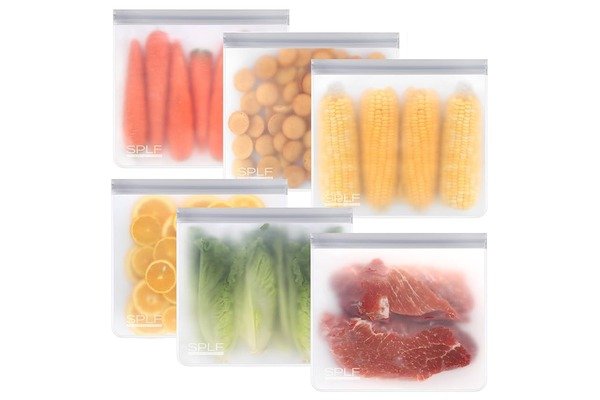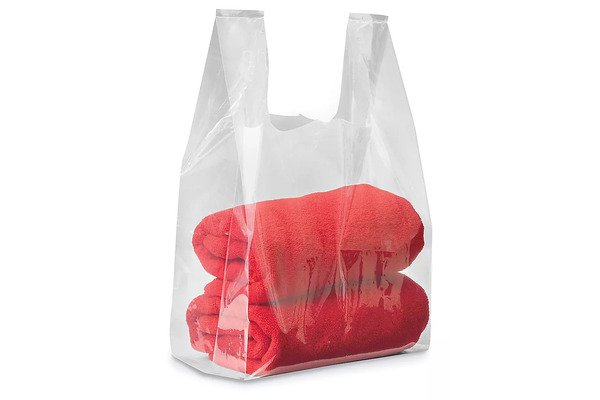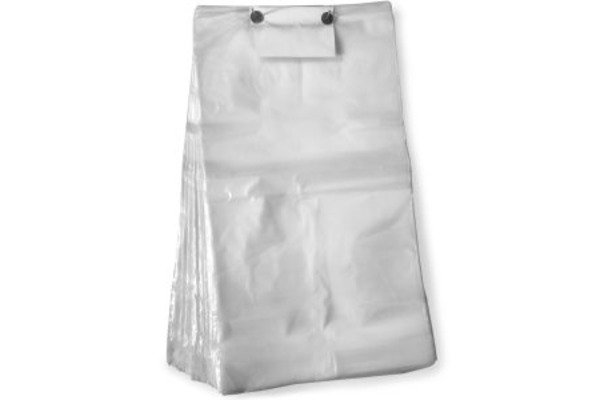
Unexpected production stoppages—like weak seals or misaligned handles—can disrupt operations, increase costs, and compromise quality. Understanding how plastic handle bag making machines1 work, and how to maintain them, is essential to minimizing downtime and maintaining consistent output.
Common issues with plastic handle bag making machines include:
- Inconsistent sealing
- Handle attachment failures
- Film feeding problems
- Electrical faults
Preventive maintenance—such as cleaning, inspecting blades, adjusting tension, and checking electronics—can significantly reduce these problems. Even machines designed with fault-reducing features, like BagMec® models, require consistent care to perform optimally.
BagMec® machines, including the Patch Handle Bag Making Machine (starting at $8,500), are built for durability. But consistent maintenance is still necessary. Below is a breakdown of typical machine issues and how to address them.
1. Inconsistent Sealing
Sealing issues are often linked to incorrect temperature settings, uneven pressure, or improper dwell time.
Primary Causes:
- Incorrect temperature
- Uneven or insufficient pressure
- Dwell time that is too short or too long
Solutions:
- Adjust sealing bar temperature
- Ensure sealing jaws apply uniform pressure
- Set an appropriate dwell time based on film type
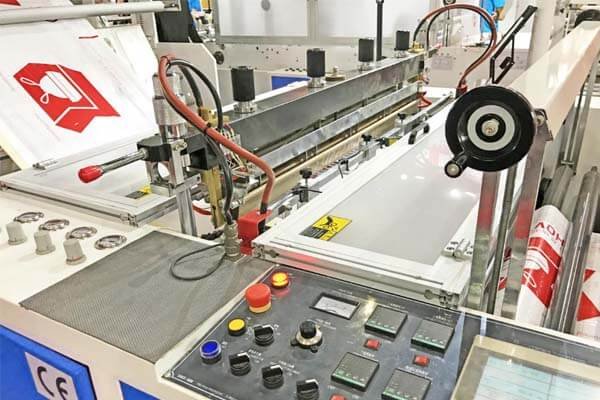
The "Golden Triangle" of Heat Sealing
Achieving a strong, reliable seal depends on the proper balance of:
- Temperature: Must be hot enough to melt the film without degrading it.
- Pressure: Should be evenly distributed to avoid weak spots.
- Dwell Time: Needs to allow full bonding of film layers.
Troubleshooting Guide
| Problem | Likely Cause | Solution |
|---|---|---|
| Weak or incomplete seal | Low temperature or short dwell time | Increase temperature gradually; lengthen dwell time |
| Burned or brittle seal | Excessive temperature | Decrease temperature in small increments |
| Wrinkled seal area | Uneven pressure or improper film tension | Adjust sealing bar alignment and film tension |
| Seal fails on one side | Dirty or misaligned sealing bar | Clean and realign the sealing bar; check pressure |
Film Type Considerations
Different materials (e.g., LDPE, HDPE, PLA) require different settings. BagMec® machines allow fine-tuning via the PLC touchscreen to accommodate various substrates.
Teflon Tape Inspection
Regular inspection of the Teflon sealing bar tape is essential. Replace if damaged or contaminated to maintain sealing quality.
2. Poor Handle Attachment
Handles that detach easily indicate a fault in the cutting or sealing phase2.
Common Causes:
- Dull die-cutter blades
- Misaligned components
- Incorrect pressure or temperature
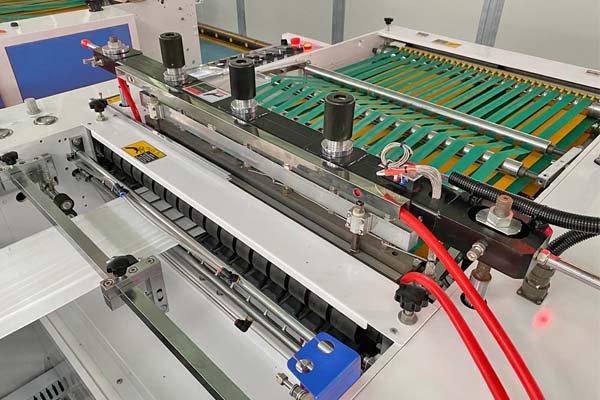
Key Components to Check
Die-Cutter Unit
- Inspect for sharpness weekly
- Replace dull or damaged blades to ensure clean cuts and avoid stress points in the film
Welding and Sealing
- Pressure and heat must be balanced for patch and bag material thickness
- Proper alignment ensures even load distribution on handles
Handle Attachment Maintenance Checklist
| Frequency | Task | Purpose |
|---|---|---|
| Daily | Remove plastic scraps | Prevents blockages |
| Weekly | Inspect blade | Ensures clean cuts |
| Weekly | Clean sealing jaws | Promotes even sealing |
| Monthly | Check patch feed alignment | Prevents handle misplacement |
| Monthly | Lubricate cutter mechanism | Ensures smooth operation |
3. Film Feeding Problems
Slipping, wrinkling, or tearing of film disrupts production and wastes material.
Typical Causes:
- Dirty or worn rollers
- Incorrect film tension
- Mechanical misalignment
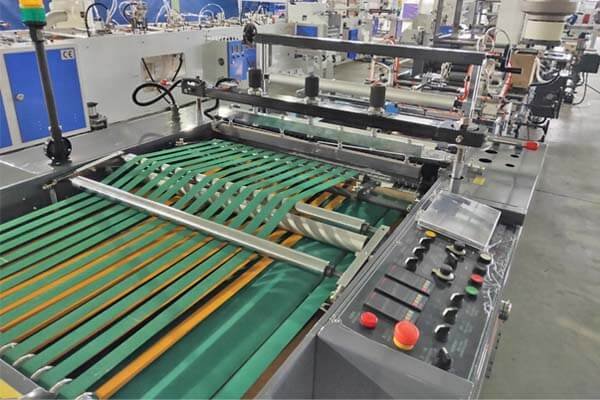
Managing Tension
- Too little tension: Film wrinkles or shifts
- Too much tension: Film stretches or tears
Smart Tension Control—BagMec®’s patented system—adjusts tension automatically throughout the roll’s life cycle, improving consistency and reducing waste.
Roller Maintenance
- Clean weekly using isopropyl alcohol
- Inspect for wear, hardening, or cracking
- Keep film path clear of debris or sharp edges
Film Feeding Troubleshooting Guide
| Symptom | Cause | Recommended Action |
|---|---|---|
| Wrinkles before sealing | Low tension or roller misalignment | Increase tension, realign rollers |
| Inconsistent bag length | Roller slippage or dirty encoder | Clean rollers and encoder |
| Film tearing | Excessive tension or sharp edges | Reduce tension, inspect film path |
4. Maintenance Schedule
A structured maintenance routine reduces failures and prolongs machine life. BagMec® recommends a three-tiered approach.
Daily (Approx. 15 Minutes)
- Visual inspection of bolts, hoses, and cables
- Wipe down surfaces and blow off sensors with air
- Clear all scraps and leftover material
- Listen for unusual machine sounds
Weekly (Approx. 1 Hour)
- Inspect and clean blades, belts, and rollers
- Test emergency stops and safety guards
- Confirm sensor alignment and cleaning
Monthly (2–4 Hours)
- Lubricate bearings and chain drives
- Check and tighten electrical connections
- Calibrate sensors and encoder
- Review PLC diagnostic logs
Maintenance Summary Table
| Component | Daily | Weekly | Monthly |
|---|---|---|---|
| Sensors | Wipe clean | Check alignment | Test in PLC |
| Sealing Bar | Clean surface | Inspect Teflon tape | Check wiring |
| Cutting Blade | Clear debris | Inspect sharpness | Tighten holder |
| Rollers | Visual check | Clean thoroughly | Inspect wear |
| Pneumatics | Drain water trap | Leak check | Pressure test |
| Bearings | Listen for noise | — | Lubricate |
Conclusion
Consistent performance from a plastic handle bag making machine requires ongoing maintenance. Sealing integrity, handle durability, and film feeding reliability all depend on regular inspections and proper care. A proactive maintenance schedule3 minimizes downtime and ensures product quality—maximizing both uptime and customer satisfaction.
-
Explore this resource to learn effective maintenance strategies that enhance machine performance and reduce downtime. ↩
-
Explore common issues in the cutting and sealing phases to enhance the reliability of handle attachments. ↩
-
Learn how to create an effective maintenance schedule that prolongs machine life and ensures consistent output. ↩



